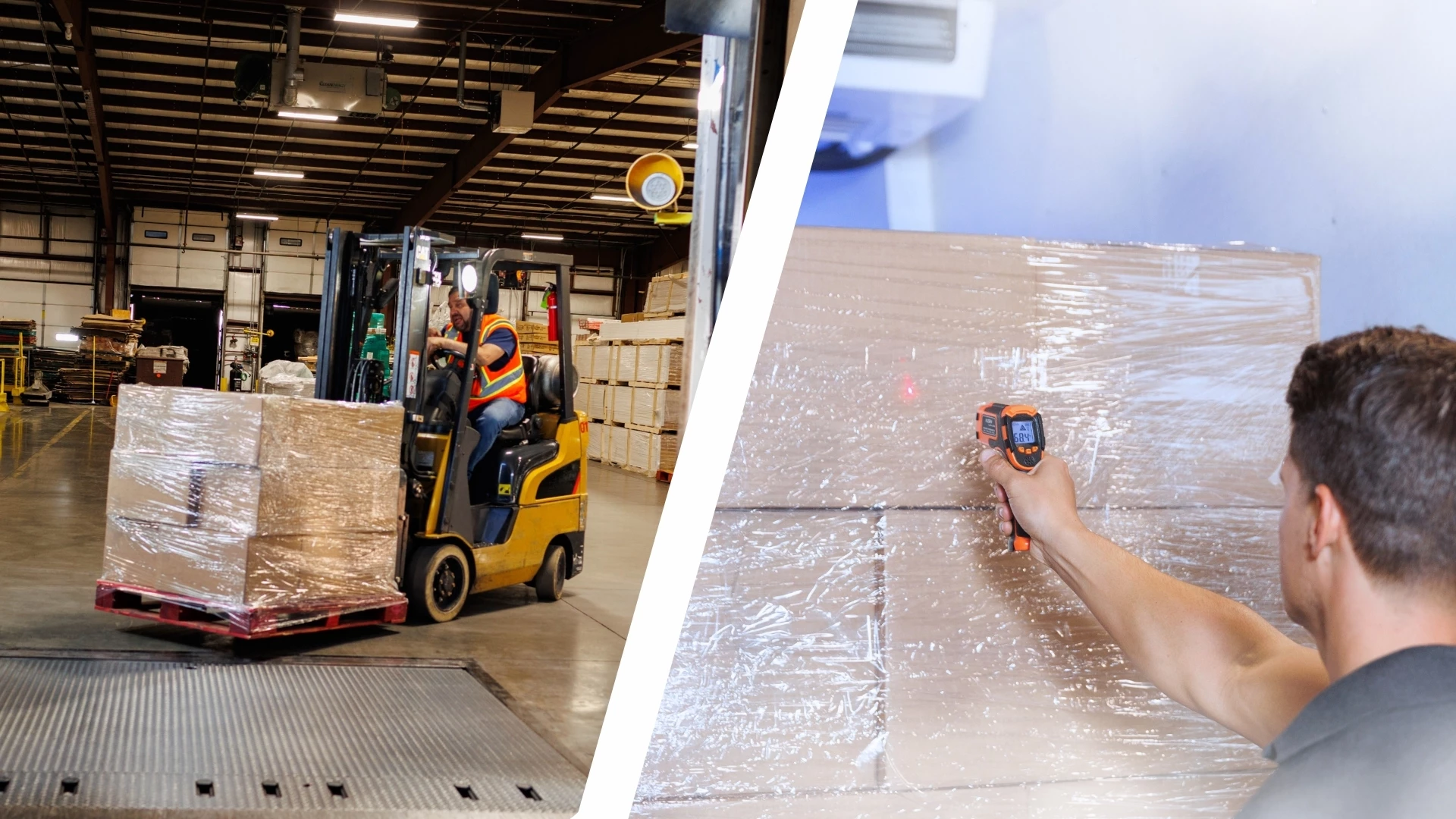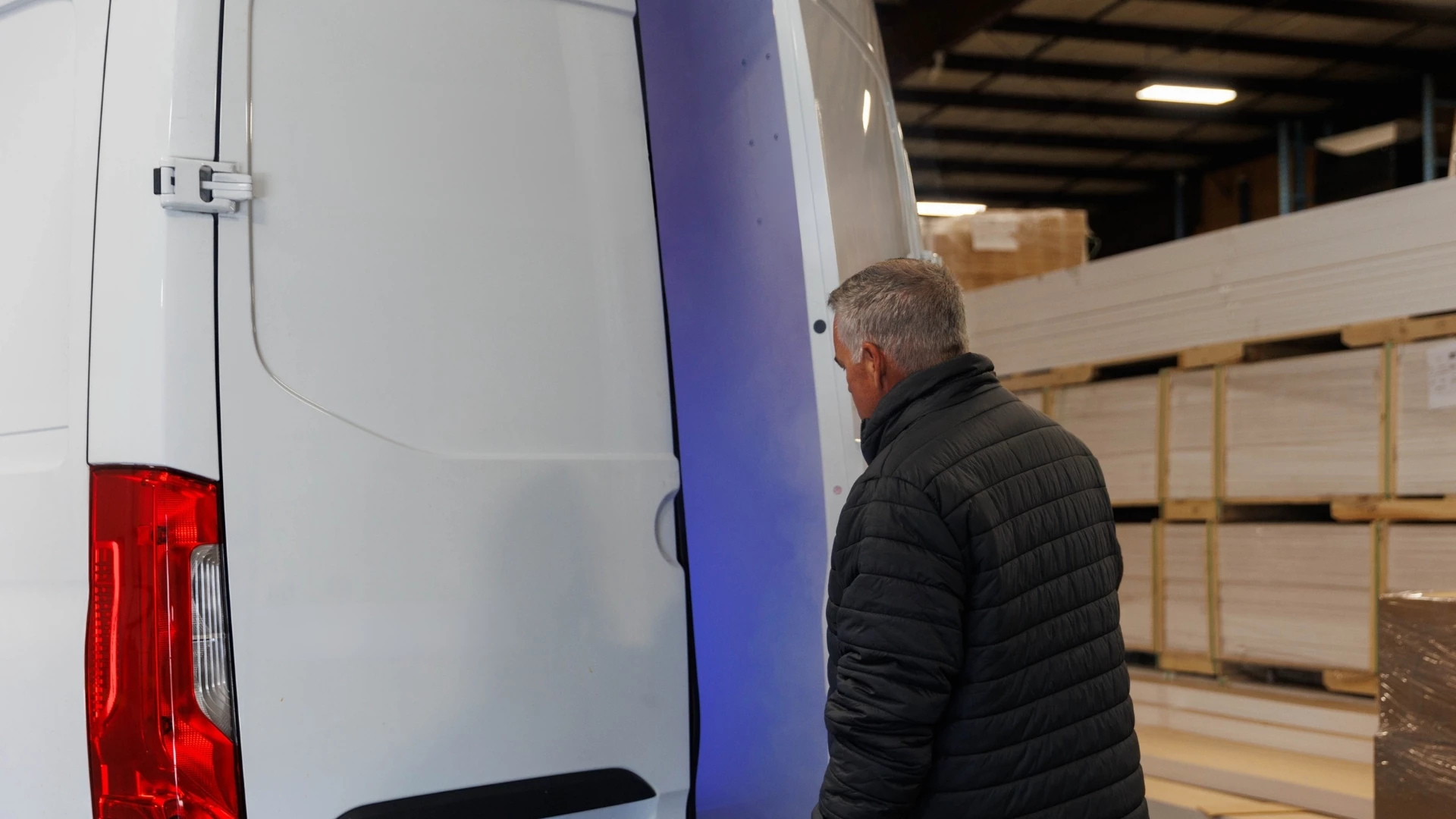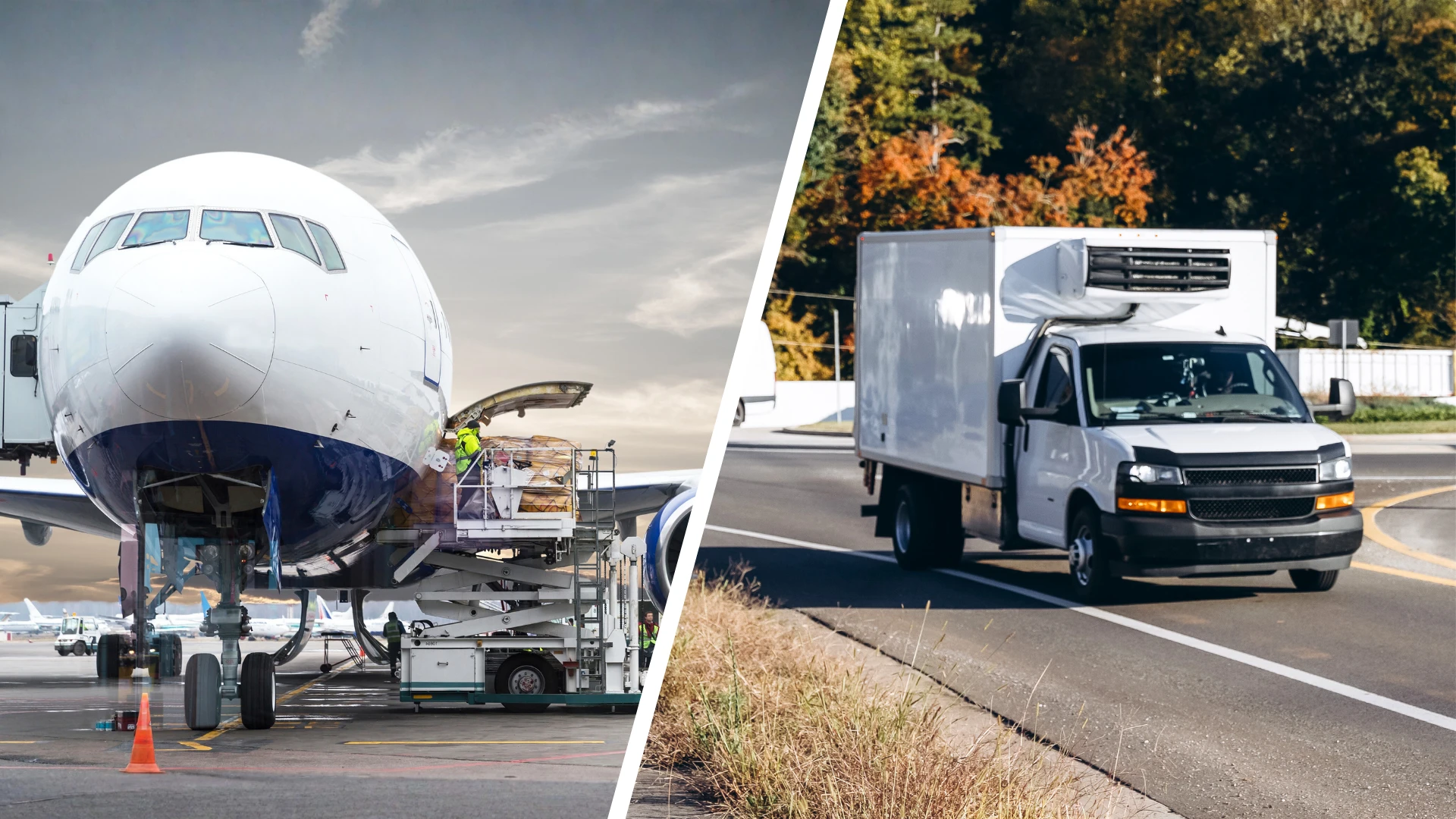
Know the Difference
Do you have a question about the differences between a cold and standard supply chain?
A cold chain is specifically designed to handle temperature-sensitive products, such as fresh food, pharmaceuticals, biologics, and certain chemicals, maintaining strictly controlled low temperatures from origin to destination. At the same time, a normal supply chain typically transports goods without continuous temperature monitoring or cooling.
However, the differences between cold and standard supply chains extend far beyond temperature control alone.
Product Type and Sensitivity
The kind of product you’re shipping is usually the biggest clue as to whether a cold chain or a regular supply chain is the best choice. For delicate, temperature-sensitive goods, like fresh produce, dairy, frozen foods, vaccines, or even certain chemical compounds, a cold chain is the way to go. That kind of risk isn’t just expensive; it can also endanger public health if, for example, a vaccine loses its potency.
On the other hand, regular supply chains are perfectly fine for goods that don’t need such precise temperature management. Clothing, consumer electronics, and hardware products can generally handle modest changes in heat or cold without any major issues. They might still need protection from moisture, dust, or physical damage, but they’re nowhere near as vulnerable as perishable or highly sensitive items.
Temperature Control
Temperature is the lifeblood of any cold chain. Pharmaceutical items might require storage between 2°C and 8°C, while frozen foods often need to remain below –18°C to preserve their quality and shelf life. To achieve this, businesses rely on specialized packaging, refrigerated vehicles, and sophisticated cooling systems. Monitoring devices track temperature in real-time, sending alerts whenever readings drift too high or too low.
Standard supply chains typically operate at ambient conditions, relying on standard trucks, shipping containers, and warehouses that don’t feature climate control. This is perfectly acceptable for goods that can tolerate moderate shifts in temperature. While you’d never want them exposed to extreme heat or humidity, shipments of clothing or electronics don’t need constant refrigeration or a narrow temperature set point. Still, it’s crucial to maintain basic quality assurance measures, like shielding products from severe weather or direct sunlight, to avoid any unforeseen damage.
Infrastructure and Equipment
Building an effective supply chain always involves choosing the right tools for the job, and this becomes especially critical when temperature control is part of the equation. In a cold chain, even the smallest detail can make a huge difference. Insulated packaging, such as foam boxes or vacuum-insulated panels, helps maintain consistent temperatures, and gel packs or dry ice may be used to keep products within their required range. Reefer units (refrigerated trucks, containers, or railcars) are then used to move these goods, each equipped with cooling systems that can be adjusted on the fly.
Standard supply chains are decidedly simpler on the infrastructure front. Instead of specialized insulation and climate-controlled vehicles, you’ll find basic packaging and standard trucks or containers. Warehouses in these setups generally don’t need refrigeration or freezing capabilities because the products they store are hardy enough to handle everyday temperature swings. This simplicity makes normal supply chains more cost-effective in many cases, but when temperature-sensitive goods are at stake, the extra investment in cold chain infrastructure is non-negotiable.
Handling and Compliance
Handling practices can make or break any supply chain, but they’re doubly important when temperature control is on the line. In the cold chain, strict guidelines dictate how products must be stored, monitored, and documented at all times. Every step, from loading to unloading, is carefully orchestrated. Staff are trained to follow specific handling protocols because even a small mistake could render a batch of vaccines useless or cause perishable foods to spoil prematurely.
By comparison, a normal supply chain is less rigid. While there are still rules and best practices, they’re typically not as strict when it comes to temperature. The main goal is to protect goods from physical damage or theft rather than preserving their chemical or biological integrity.

Complexity and Cost
Cold chains are inherently more expensive than their ambient counterparts. Maintaining the correct temperature throughout production, storage, and distribution demands specialized equipment, constant monitoring, and highly trained personnel. Refrigerated transport vehicles cost more to operate, and cold storage facilities must be equipped with robust cooling systems, backup power sources, and fail-safes to handle emergencies.
The stakes are higher, too. Spoilage or product loss can happen rapidly if a shipment’s temperature deviates from its set range. This risk forces companies to be extra vigilant, which translates into more frequent audits, detailed documentation, and tighter contingency planning.
Regular supply chains are generally simpler and more cost-effective. Since there’s no need for climate-controlled infrastructure or round-the-clock temperature monitoring, companies can spend fewer resources on specialized equipment and training. Delivery schedules are often more flexible, and products are less likely to become unsellable due to a few degrees of temperature variance.
Risk Management
Since products in a cold chain can be ruined by even brief temperature excursions, contingency plans are a must. Many cold chain providers maintain backup generators at storage facilities, keep extra refrigeration units on standby, and set up real-time alerts so they can respond instantly if conditions drift outside acceptable ranges.
The primary risks in a normal supply chain revolve around damage, theft, or delays rather than temperature control. While it’s still crucial to ensure proper packaging, handle goods carefully, and guard against breakage, these risks don’t usually lead to immediate product loss. That said, supply chain managers in normal operations still benefit from having solid backup strategies. For instance, rerouting shipments during unexpected weather events or securing alternative carriers during peak seasons helps maintain smooth deliveries.
Technology and Real-Time Data
Advanced technology has transformed both cold and normal supply chains, but it’s especially pivotal in cold-chain logistics. Sensors and data loggers track temperature, humidity, and other conditions around the clock, providing real-time visibility into the status of sensitive cargo.
In a standard supply chain, technology focuses on efficiency rather than critical temperature monitoring. GPS tracking, route optimization software, and digital inventory management tools help businesses reduce shipping times and avoid stockouts. While real-time data is still valuable, there’s generally less urgency around environmental factors. As a result, normal supply chain tech solutions often revolve around streamlining operations, cutting costs, and enhancing customer visibility.
Back to blogYou may also be interested in

Airport Delays and Temperature Risk: How Forwarders Mitigate the Gap
Airports are the heartbeat of global trade, connecting perishable goods to every corner of the world. But for refrigerated freight, airports are also one of the riskiest points in the journey. Unlike long-haul reefer trucking, where temperature can be monitored and maintained throughout, airports introduce multiple variables, such as customs clearance, handling procedures, flight schedules, […]

Don’t Lose the Load: What Customers Need from Reefer Partners in Q4
The fourth quarter is one of the most challenging and fast-moving times in the logistics calendar. Between peak holiday demand, end-of-year retail pushes, and the unpredictability of weather events, customers face mounting pressure to keep freight moving without compromising on quality or compliance. For refrigerated freight, especially in Q4, seasonal produce, frozen goods, and pharmaceuticals […]
